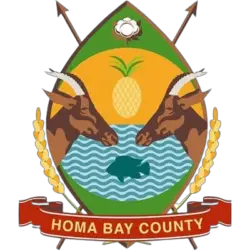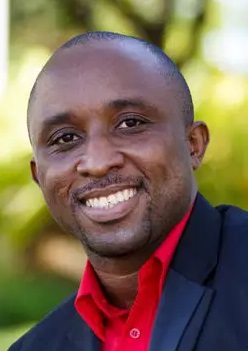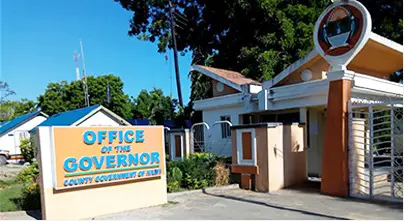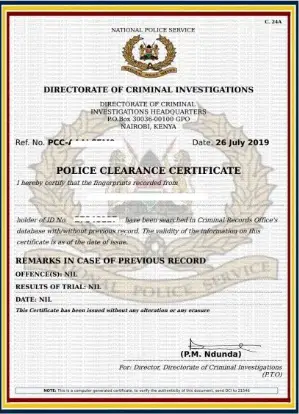If you’re planning a trip to Kenya, you may want to consider visiting Homa Bay County. Located in the southern part of Nyanza, Homa Bay County is known for its scenic hills and picturesque shoreline along the southern shores of Lake Victoria, Africa’s largest freshwater lake.
With a population of about 1.3 million people and covering an area of 3,183.3 square kilometers, Homa Bay County has a lot to offer visitors.
One of the major attractions in Homa Bay County is Lake Victoria, which is a major source of livelihood for the county. The lake offers visitors the opportunity to engage in a variety of water-based activities such as fishing, boat rides, and swimming.
If you’re interested in culture and history, you can visit the Tom Mboya Mausoleum or the Ruma National Park, which is home to a variety of wildlife including giraffes, zebras, and antelopes. Homa Bay County is also home to several bird species, making it a great destination for birdwatchers.
Whether you’re looking for adventure, relaxation, or cultural experiences, Homa Bay County has something for everyone. With its natural beauty, rich history, and friendly people, a visit to Homa Bay County is sure to be a memorable experience.
Geography
Homa Bay County is located in the Southern part of Nyanza, along the southern shores of Lake Victoria, Africa’s largest freshwater lake.
The county has an area of 3,154.7 km² and a population of 1,131,950 (2019 census).
Topography
Homa Bay County is characterized by rolling hills and valleys with altitudes ranging from 1,200 to 1,500 meters above sea level. The county is located in the western part of the East African Rift Valley, which runs from Syria to Mozambique.
The topography is mainly hilly, with the highest point being Kanyamwa Escarpment, which rises to an altitude of 1,800 meters above sea level.
The hills are covered with grass and shrubs, and the valleys are dotted with small streams and rivers that flow into Lake Victoria.
Climate
Homa Bay County has a tropical climate, with temperatures ranging from 20°C to 32°C. The county experiences two rainy seasons: the long rains, which occur from March to May, and the short rains, which occur from October to December.
The annual rainfall ranges from 1,000mm to 1,500mm. The county experiences high humidity, especially during the rainy season.
The climate of Homa Bay County is influenced by Lake Victoria, which moderates the temperature and provides moisture for the vegetation.
The lake also influences the wind patterns, which blow from the lake towards the land, bringing moisture and moderating the temperature.
The lake also supports fishing activities, which are a major source of livelihood for the people of Homa Bay County.
Demographics
Population
Homa Bay County has a total population of 1,131,950 persons, with 539,560 males, 592,367 females, and 23 intersex persons. The county has a population density of 359 people per square kilometer.
The population is predominantly rural, with 90% of the population living in rural areas. The county has a total of 262,036 households, with an average of 4.3 people per household.
According to the 2019 Kenya Population and Housing Census, the population of Homa Bay County grew by 24.8% from the 2009 census. The population growth rate is higher than the national average growth rate of 2.2%.
Ethnic Groups
The county is mainly inhabited by the Luo tribe, which makes up 96.8% of the population. Other ethnic groups in the county include the Kipsigis, Kuria, and Maasai. The Luo tribe is the third-largest ethnic group in Kenya, after the Kikuyu and the Luhya.
The county’s population is also diverse in terms of religion, with Christianity being the most widely practiced religion. Other religions practiced in the county include Islam and traditional African religions.
Administration
Governance
The County Government of Homa Bay is headed by a governor, who is elected every 5 years. The county government structure consists of 10 County Executive Committee members (CECs), also known as Cabinet Secretaries, who are responsible for various portfolios.
The County Assembly of Homa Bay is the legislative arm of the county government, comprising 47 elected members. The Assembly is responsible for enacting laws and overseeing the county government’s operations. The Speaker of the County Assembly is Boaz Okoth, and the Deputy Speaker is Jackline Opondo.
Administrative Divisions
Homa Bay County has five administrative divisions: Homa Bay Town, Mbita, Ndhiwa, Rachuonyo, and Suba. Each division is headed by a Deputy County Commissioner (DCC) who is responsible for overseeing the administration of the division.
The DCC is assisted by Assistant County Commissioners (ACCs) who are responsible for the administration of sub-locations within the division.
| Constituency | Wards |
|---|---|
| Kasipul | West Kasipul |
| South Kasipul | |
| Central Kasipul | |
| East Kamagak | |
| West Kamagak | |
| Kabondo Kasipul | |
| Kabondo East | Kabondo West |
| Kokwanyo/Kakel | |
| Kojwach | |
| Karachuonyo | West Karachuonyo |
| North Karachuonyo | |
| Kanyaluo | |
| Central Karachuonyo | |
| Kibiri | Wangchieng’ |
| Kendu Bay Town | Homa Bay Town |
| Homabay Central | |
| Homabay Arujo | |
| Homabay West | |
| Homabay East | |
| Ndhiwa | Kwabwai |
| Kanyadoto | |
| Kanyikela | |
| Kabuoch South/Pala | |
| Kanyamwa Kalogi | |
| Kanyamwa Kosewe | |
| Kabuoch North | |
| Rangwe | West Gem |
| East Gem | |
| Kagan | |
| Kochia | |
| Mbita | Mfangano Island |
| Rusinga Island | |
| Kasgunga | |
| Gembe | |
| Lambwe | |
| Suba | Gwassi South |
| Gwassi North | |
| Kaksingri west | |
| Ruma Kaksingri |
The county is further divided into 40 wards, each represented by an elected Member of the County Assembly (MCA).
The MCAs are responsible for representing the interests of their constituents in the County Assembly and overseeing the implementation of county government projects and programs in their respective wards.
Economy
Homa Bay County’s economy is primarily based on agriculture, tourism, and fisheries. The county government has implemented various initiatives to promote economic growth and development in these sectors.
Agriculture
Agriculture is the backbone of Homa Bay County’s economy, with over 80% of the population engaged in farming.
The county is known for its fertile soil and favorable climate, which makes it ideal for the cultivation of various crops, including maize, beans, cassava, and sweet potatoes.
The county government has implemented various programs to support farmers, including the provision of subsidized fertilizers and seeds, and the establishment of agricultural extension services.
Tourism
Homa Bay County is home to various tourist attractions, including Lake Victoria, Ruma National Park, and the Mfangano Island.
The county government has implemented various initiatives to promote tourism, including the construction of hotels and other tourist facilities, and the establishment of tourist information centers.
The county has also organized various cultural festivals and events to attract tourists.
Fisheries
Homa Bay County is located along the shores of Lake Victoria, which is the primary source of fish in the county. Fishing is a significant economic activity in the county, with over 50,000 people engaged in the sector.
The county government has implemented various initiatives to promote sustainable fishing practices, including the establishment of fish hatcheries and the provision of fishing gear and equipment.
Education
Homa Bay County has made significant progress in improving its education system in recent years. The county government has invested heavily in education, building new schools, and improving existing ones.
The county has a total of 478 primary schools, 120 secondary schools, and 9 tertiary institutions. The county has also implemented programs to increase access to education for girls and children with disabilities.
The county government has also initiated programs to improve the quality of education in the county. The government has implemented teacher training programs to improve the quality of instruction in schools.
The county has also provided textbooks and other learning materials to students to improve their learning outcomes.
In addition to formal education, the county has also implemented programs to improve vocational training and skills development.
The county has established vocational training centers to provide technical skills to students who are not interested in pursuing formal education. These centers offer training in various fields, including carpentry, masonry, and tailoring.
Homa Bay County has made significant progress in improving its education system. The county government has invested in infrastructure, teacher training, and learning materials to improve the quality of education.
The county has also implemented programs to increase access to education for girls and children with disabilities. The county’s efforts have resulted in improved learning outcomes and increased enrollment in schools.
Healthcare
Homa Bay County is committed to providing quality healthcare services to its residents. The county government has implemented various initiatives to improve the accessibility, affordability, and quality of healthcare services. Here are some of the healthcare services available in Homa Bay County:
- Maternity Services: The county provides comprehensive maternity services to ensure the health of both the mother and the child. The services include antenatal care, delivery services, postnatal care, and family planning.
- HIV/AIDS Services: Homa Bay County has a robust HIV/AIDS program that provides testing, treatment, and counseling services. The county also provides support to people living with HIV/AIDS to improve their quality of life.
- Dental Care: The county provides dental care services to prevent and treat dental diseases. The services include dental check-ups, cleaning, fillings, extractions, and root canal treatment.
- Pediatric Services: Homa Bay County provides comprehensive pediatric services to ensure the health of children. The services include immunization, growth monitoring, nutrition counseling, and treatment of common childhood illnesses.
In addition to these services, the county also provides other healthcare services such as cancer screening, mental health services, and treatment of non-communicable diseases.
The county has invested in modern medical equipment and facilities to ensure that residents receive quality healthcare services.
The county has also implemented various healthcare programs to improve the health of its residents. For example, the county has implemented a malaria control program to reduce the prevalence of malaria.
The program includes distribution of mosquito nets, indoor residual spraying, and treatment of malaria cases.
Culture and Heritage
Homa Bay County is a cultural melting pot with a rich history that dates back to the early 20th century. The county is predominantly inhabited by the Luo community, known for their fishing and agricultural practices.
The county has a diverse mix of cultures, with over 20 different ethnic groups represented. The cultural diversity of the county is celebrated through various cultural events and festivals held throughout the year.
Local Traditions
The Luo community has a rich cultural heritage that is expressed through music, dance, and traditional attire. The traditional Luo dance is called Ohangla and is performed during weddings, funerals, and other cultural events.
The dance involves a lot of jumping and is accompanied by traditional instruments such as the nyatiti, a stringed instrument, and the oporo, a percussion instrument.
Another important cultural tradition in Homa Bay County is the practice of traditional medicine. The county is home to several traditional healers who use herbal remedies to treat various ailments.
The traditional healers are highly respected in the community and are consulted by many people for their healing powers.
Historical Sites
Homa Bay County is home to several historical sites that are of great significance to the local community. One such site is the Ruma National Park, which is home to several endangered species of animals such as the roan antelope, the Jackson’s hartebeest, and the African wild dog.
The park is also home to several species of birds and is a popular destination for bird watchers.
Another historical site in the county is the Tom Mboya Mausoleum, which is located in Rusinga Island. Tom Mboya was a Kenyan politician and labor activist who played a key role in the struggle for independence.
He was assassinated in 1969, and his mausoleum is a popular tourist attraction in the county.
Infrastructure
Transportation
Homa Bay County has a well-developed transportation system that connects the county with other parts of Kenya. The county has a total of 1,548 km of road network, with 1,120 km being unpaved and 428 km being paved.
The county government has allocated funds for road rehabilitation and construction projects.
One of the major road rehabilitation programs is the Major Access Roads Rehabilitation Program, which aims to improve accessibility and connectivity for the residents of Homa Bay county, particularly those in rural areas who have previously been cut off.
The county also has a railway line that runs from Kisumu to Homa Bay town, which is a major mode of transportation for goods and people. The railway line has three stations in the county, namely Homa Bay, Kendu Bay, and Kosele.
Utility Services
Homa Bay County provides essential utility services to its residents, including water, electricity, and sanitation. The county government has invested in the expansion and improvement of water supply systems to ensure that residents have access to clean and safe water.
The county has a total of 11 water supply systems, which include 5 gravity-fed systems, 3 borehole systems, and 3 piped systems.
The county has also invested in the expansion and improvement of the electricity distribution network to ensure that residents have access to reliable and affordable electricity.
The county has a total of 4,000 electricity connections, with plans to increase the number of connections in the future.
Sanitation is also a priority for the county government, and efforts have been made to improve the sanitation infrastructure in the county. The county has a total of 14 public toilets, which are maintained by the county government.
Frequently Asked Questions
What are the sub-counties within Homa Bay County?
Homa Bay County has eight sub-counties, including Homa Bay Town, Ndhiwa, Mbita, Rangwe, Suba, Kabondo Kasipul, Rachuonyo North, and Rachuonyo South.
What is the significance of Homa Bay County?
Homa Bay County is located in the Southern part of Nyanza, along the southern shores of Lake Victoria- Africa’s largest freshwater lake.
Known for its scenic hills and picturesque shoreline, Homa Bay County covers an area of 3,183.3 sq km with a population of about 1.3 million people.
The county is also home to diverse wildlife, vibrant traditions, and a rich cultural heritage.
What are the latest job vacancies in Homa Bay County for 2023?
You can find the latest job vacancies in Homa Bay County for 2023 on the county’s official website or by contacting the county’s human resource department directly.
What is the role of the Ministry of Agriculture in Homa Bay County?
The Ministry of Agriculture in Homa Bay County is responsible for promoting sustainable agriculture practices, improving food security, and enhancing rural livelihoods. The ministry also provides extension services, research, and training to farmers in the county.
Final Thoughts
As you conclude your exploration of Homa Bay County, you may have noticed the county’s rich cultural heritage and natural beauty.
The county is home to several landmarks, including the famous Lake Victoria, which is a major source of livelihood for the residents.
The county’s development plan, which is implemented through the County Integrated Development Plan (CIDP), outlines the strategic priorities that reflect the county’s vision, mission, and values. The plan focuses on sectors such as agriculture, health, education, infrastructure, and tourism, among others.
The county’s government is committed to implementing the CIDP and improving the lives of its citizens by providing basic services, creating job opportunities, and promoting economic growth.
The government also encourages public participation in the planning and implementation of development projects to ensure that they meet the needs of the people.




